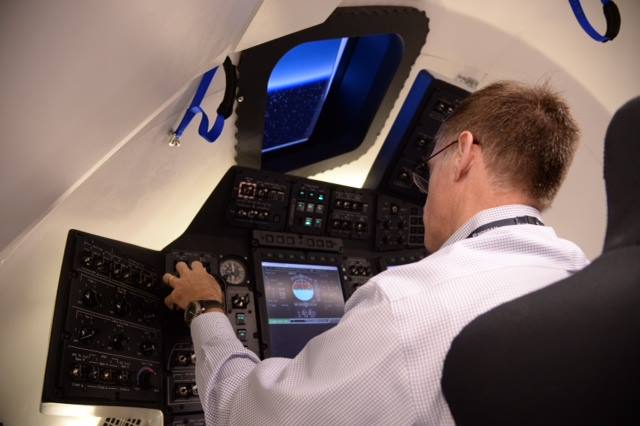
KENNEDY SPACE CENTER, FL — A two-person crew comprising “one NASA astronaut and one Boeing test pilot will fly aboard the first orbital test flight of our commercial CST-100 manned capsule in 2017.” Chris Ferguson, commander of NASA’s final shuttle flight and now director of Boeing’s Crew and Mission Operations, told AmericaSpace in an exclusive one-on-one interview about Boeing’s human spaceflight efforts to build a private and efficient “space taxi” for American astronaut crews.
“The first manned test flight could happen by the end of summer 2017 with a two person crew,” Ferguson told me during a detailed conversation about Boeing’s push to restore an indigenous U.S. capacity for launching our astronauts to low-Earth orbit (LEO) and the International Space Station (ISS).
The CST-100 is Boeing’s entry into NASA’s Commercial Crew program aimed at fostering the development of a next-generation crewed vehicle to replace the space shuttle after its forced retirement following wheel stop in July 2011. Three-time space flying veteran Chris Ferguson commanded the last shuttle flight, STS-135.
Since that day, no American astronauts have launched to space from American soil on American rockets seated inside American spaceships.
They have been totally dependent on the Russian Soyuz capsule for tickets to space and back—at a cost of over $70 million per seat under the latest contract with Roscosmos.
Boeing’s philosophy is to make the CST-100 a commercial endeavor, as simple and cost effective as possible to kick start U.S. human spaceflight efforts as soon as possible—especially given the meager Commercial Crew budgets approved by a reluctant Congress.
“The CST-100 is a cheap, cost effective vehicle that doesn’t need to be luxurious because it only needs to hold people for 48 hours. It’s a simple ride up to and back from space,” Ferguson emphasized.
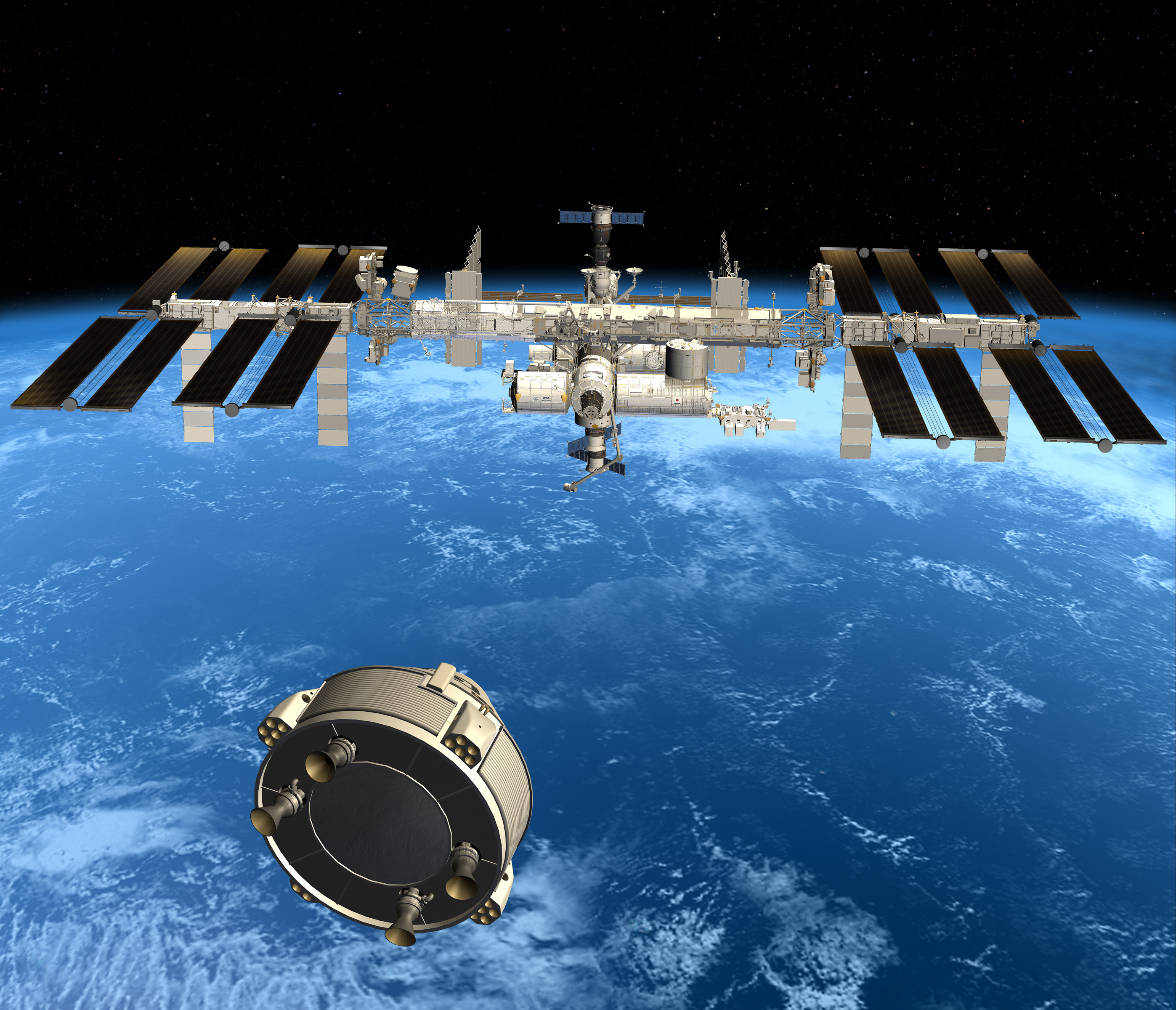
I asked Ferguson: “Who will fly on the maiden CST-100 orbital test flight? Will it be a mixed NASA/Boeing astronaut crew?”
“From the latest NASA contracts regarding the test flight, NASA apparently wants to fly one of their astronauts aboard. So our assumption now is that there it will be one Boeing test pilot and one NASA astronaut,” Ferguson said.
“A year ago, NASA officials specifically told me that no NASA astronauts would be allowed to fly on the first test mission until the spaceship was basically proven to be flight worthy.”
“That’s a clear change from NASA’s earlier plan calling strictly for two company test pilots, is that right?”
“Yes, that’s a change and the premise we are now operating under,” Ferguson confirmed.
“Who will pick the crew?”
“Boeing will pick the test pilot. NASA will pick the astronaut.”
“When will Boeing and NASA select the crew? Are we getting close to selection time?”
“The announcement of who is on the crew will come closer to when they are ready to start training for the flight.”
“It’s prudent to wait like NASA did [previously] because sometimes people develop health problems. It’s much easier to wait until later and put someone on a crew, rather than announce it [too] early and have things move and change around.”
“Where will Boeing look for a qualified test pilot?”
“Boeing will reach out to see who out there is qualified and wants to do this.”
“The smartest thing would be to pick an old NASA astronaut!”
“So how about you? Would you like to do it?” I quickly inquired.
“I don’t know. Sure I’d like to go to space again, who wouldn’t like to go to space,” Ferguson mused, as we chuckled.
“But it’s a business for young, steely eyed missile men,” he replied, taking himself out of the running. … Maybe …
“I think we could pry someone out of NASA and convince them to work for Boeing to fly a test flight. I wouldn’t be surprised if the phone starts ringing here in the next few months looking for someone.”
“I imagine you’d have at least 20 or 30 quick volunteers!”
“Yes, and Bob Cabana [Kennedy Space Center (KSC) director and former shuttle commander] is one of them. He’s made that very public, although he knows it couldn’t possibly happen!”
“So we are thinking about the crew.”
Boeing’s strategy for the first manned orbital flight test is exciting and ambitious and is sure to attract numerous applicants.
“We may go all the way to the space station. We want to dock and maybe spend a couple weeks there.”
“SpaceX did it [as well as Orbital Sciences for their first unmanned cargo dockings]. So we think we can too.”
“The question is can we make the owners of the space station comfortable with what we are doing. That’s what it really comes down to.”
“But our focus right now is making sure we build the vehicle the right way,” Ferguson said.
Boeing plans to assemble and manufacture the CST-100 crew and service modules in Florida at KSC inside an old space shuttle hangar now sitting idle and undergoing refurbishment with funding from Space Florida.
“The CST-100 will be manufactured at the Kennedy Space Center inside a former shuttle hanger known as Orbiter Processing Facility 3, or OPF-3, which is now [transformed into] a Boeing processing facility,” Ferguson told me.
Boeing will assume the lease to OPF-3 from Space Florida by late June 2014 and the project will bring jobs back to KSC.
“Over 300 people will be employed.”
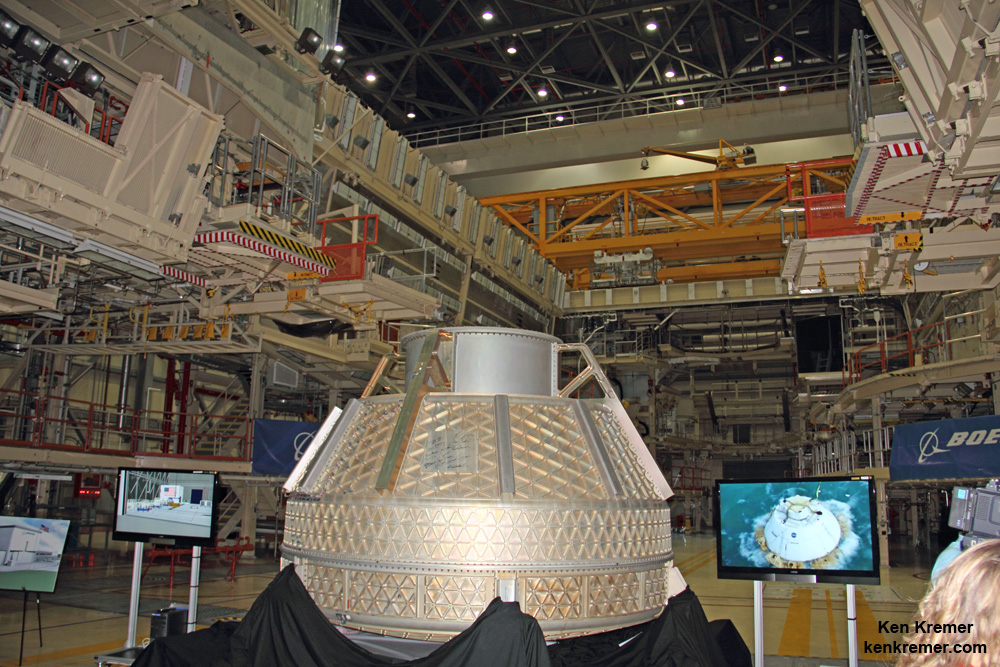
Boeing is one of three American aerospace firms vying to restore America’s capability to fly astronauts to the space station by late 2017, using seed money from NASA’s Commercial Crew Program (CCP) in a public/private partnership.
The other competitors are the SpaceX Dragon and Sierra Nevada Dream Chaser. The next round of commercial crew contracts will be awarded by NASA around late summer.
The CST-100 is being designed at Boeing’s Houston Product Support Center in Texas and is comprised of a crew module (CM) and service module (SM).
The combined CM/SM stands some 5.03 meters (16.5 feet) high. The capsule itself is 4.56 meters (175 inches) in diameter.
The reusable capsule will launch atop a man rated United Launch Alliance (ULA) Atlas V rocket and carry a mix of cargo and astronauts to the ISS. It must meet NASA’s stringent safety and reliability standards.
“What is the crew size that can fly aboard CST-100?”
“The crew size will be five. We can go to seven if we have to. But NASA only wants four. Their requirement says four. We sell NASA the seats,” said Ferguson.
“So will you carry some cargo up too if you aren’t bringing up seven crewmembers?”
“Yes. We will take up come cargo. It’s really up to what NASA wants and decides. If they want some cargo in addition to people.”
“So in place of the astronauts seats would you have some type of storage lockers or compartments?”
“Yes, you could. Although that’s not part of what we are designed to or for. So even if we carry five crewmembers we will also carry some cargo.”
Therefore, the ISS crew size will increase to at least seven depending on how many seats NASA procures.
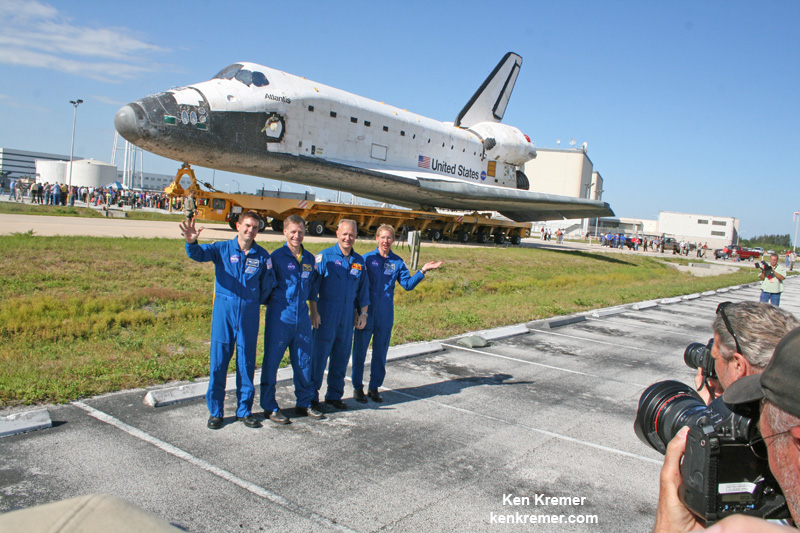
All three companies currently receiving funding from NASA’s Commercial Crew Program are making excellent progress in achieving the agency’s mandated milestones in the current contract period known as Commercial Crew Integrated Capability initiative (CCiCAP).
The direction and look of America’s future crewed spaceship(s) for ISS operations will become clearer later this year, when NASA down selects to one or more vehicles in the next round of funding dubbed CCtCAP.
Stay tuned here for continuing developments.
Want to keep up-to-date with all things space? Be sure to “Like” AmericaSpace on Facebook and follow us on Twitter: @AmericaSpace
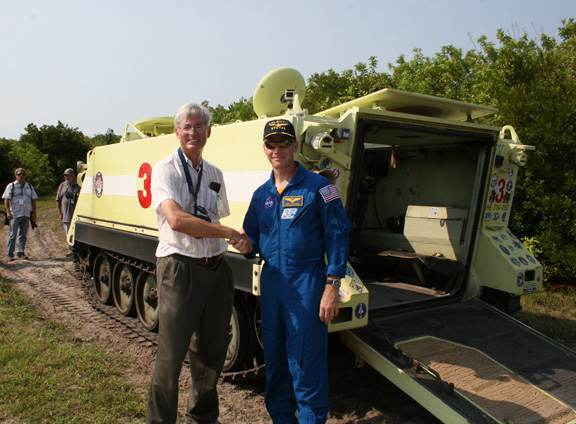
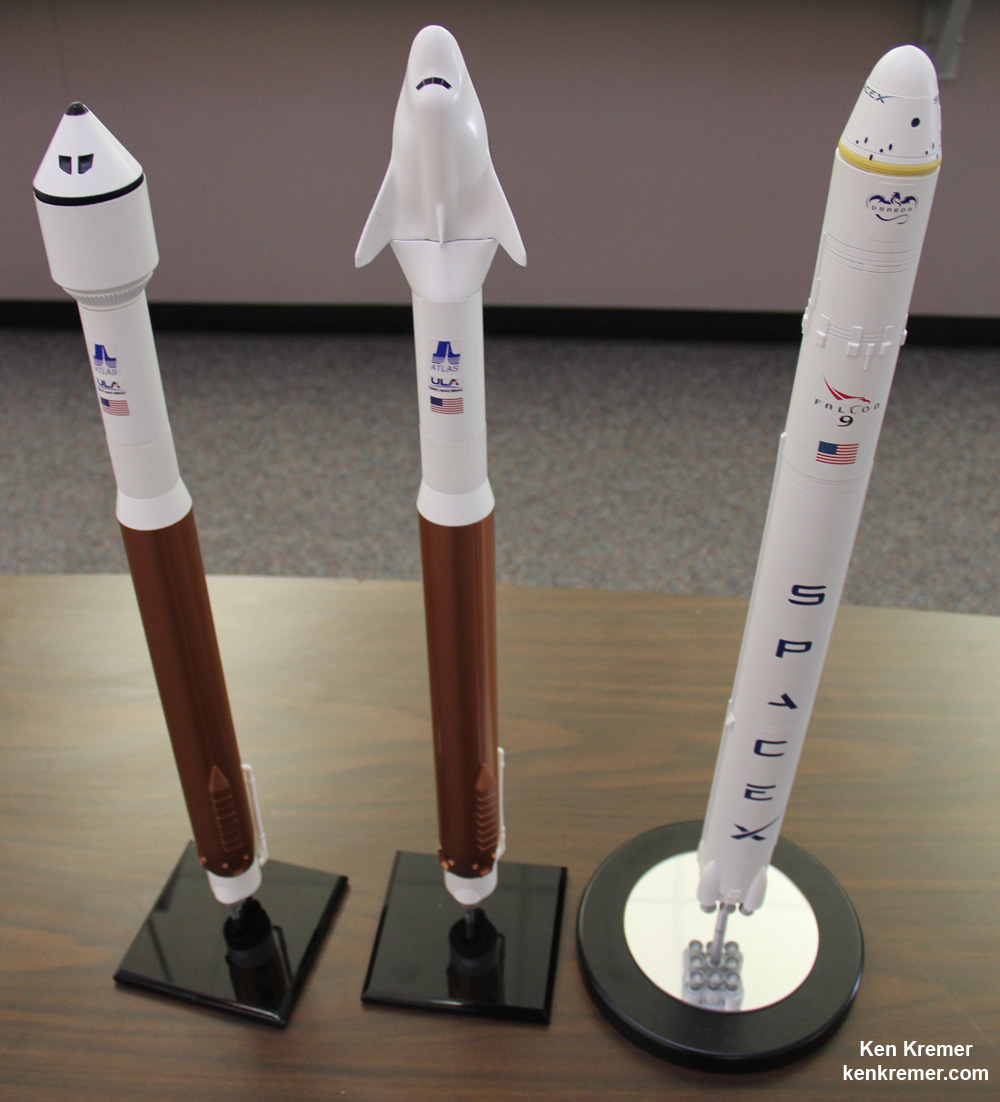




The question may be: Who flies aboard Dragon V2?
Competition is a wonderful thing.
As far as flight experience between different vehicles we should wait to see what those that have flown on them have to say. Hopefully some will experience more than one.
Is the CST-100 the same as the Orion? In watching the Dragon V2 presser…I was surprised to an interior with digital display controls…Won’t High Energy Cosmic Radiation play havoc with these electronics ?
There are a number of issues related to the crewed version of the Dragon that was presented.
Just to list one, the crew restraint seats. They do not have any visible way of securing the crewmembers heads in case of the need for an abort. An abort is going to be a dramatic situation, without such capability the crew would be risking (at best) extreme injury.
I do not want to get in another back and forth with SpaceX fans, but just a word of actually friendly advice. If SpaceX ever does try to fly a crewed version of the Dragon, it would be a good idea not to get too attached to the look of the vehicle illustrated in the presentation.
I believe I qualify as a newspace fan around here. (insert several lines of SpaceX cheer leading here) In addition to the restraint problem, I am concerned about the ability to operate those controls at all without without arm rests to keep the hands steady during normal launch vibration before even getting into the abort scenarios.
I also am skeptical about cantilever supports for anything in a high stress situation. I expect a few more struts and supports in the finished article that will clutter up the clean look a bit.
We may argue another time Joe, but not on this issue.
Good points all.
I will throw in one more and that is the “digital display controls”. I will spot them that they can protect their electronics from the environment, but they also appear to be touch screen.
Last I heard SpaceX still intending to use launch/entry pressure suits for Dragon launch and landing. Touch screens and the multilayer pressure gloves (even when unpressurized) do not work well together.
The good news is twofold. They will learn fast if it’s an issue and correct it quickly. Second is they don’t need the crew to control the craft. Technically, it isn’t even required they know how (but I don’t see that as likely.)
Spoken like a true believer, but they have the controls, seats etc. there and are advertising this as a prototype not a mockup.
I did not want to go into this level of detail, but (if they are still planning to use launch/entry suits) they do not have the extra fans and ducting for the suit loop, the routing for the umbilical’s and the required extra restraints for them.
All of this, if required, will significantly increase the mass and reduce the internal pressurized volume of the vehicle.
I do not mean that it cannot be made to work at all, but it will be more than a quick fix (read schedule delays) and likely increase the cost per flight and reduce the crew size (read increase operational costs).
You got me Joe. The good news is actually threefold.
They have the extra capacity already that address your (I believe correct) concerns.
Thank goodness for SpaceX. By not knowing what they can’t do, they’re doing what others aren’t.
Since that statement makes no sense, there is no possible sensible response.
If you don’t understand it, that’s not my problem.
they do not have the extra fans and ducting for the suit loop
They have more than enough internal volume if they need to add them.
All of this, if required, will significantly increase the mass and reduce the internal pressurized volume
They have more than enough of both.
Joe, I responded directly to what you said but without quoting you. Now I have quoted you. How is it you don’t understand a direct response? Do you not read what you yourself wrote?
You make great remarks. That’s why I do respond directly to them. If you were a fool I wouldn’t bother.
(1) In your expert engineering judgment how much mass and volume will all that extra hardware entail?
(2) In your expert engineering judgment how much excess mass and free volume does SpaceX have available?
If you cannot answer those questions specifically then you statement that they have “more than enough of both” is meaningless.
IMO that was a press release mock up that was unveiled. I hope that there is no way that SpaceX believes that the thing we saw was the finished article. Hope is a lousy engineering plan. While based on track record I think SpaceX will eventually deliver the working space ship, my confidence was not bolstered by the video I saw. I will allow that there is much that I probably missed.
I have no idea how my thoughts on the matter enter the discussion you two are having on these threads.
John,
The problem is SpaceX did not say this was a “press release mock up”. They said it was a prototype (that is a flight qualifiable vehicle).
That was probably a shot at Boeing that had just shown a mockup of the CST-100. SpaceX (SpaceX would have you believe) was not just showing you a mere mockup, but a real flight vehicle.
So we have two choices:
(1) It was supposed to be a real prototype and is a startlingly bad one, calling into question their design work.
(2) It was only a mockup, in which case SpaceX is once again being intentionally misleading.
Or three:
3) It is a real prototype; which is to say not a final product but a working prototype.
CST-100 totally different from Orion. please check my earlier AS Orion story here: http://www.americaspace.com/?p=56359
The electronics are fine, it worked in Star Trek, it’ll be fine here.
What about the impact of a possible RD-190 sales ban from Russia which would stop the Atlas 5 production line and ultimately, both the CST-100 and Dream Chaser programs?
Are there any contingency plans?
@Joe 8:05 post reply
I am strongly biased in favor of SpaceX.
I cannot refute your points, even though I would like to.
I watched the video again to see if there was something I missed. I can picture those seats failing at high gee and vibration. A head roll to one side off the head rest could be a very bad day at 3 gee or so.
I think we are in agreement to the level possible here. I think SpaceX will beat Boeing to the draw. I just hope go fever doesn’t drive the schedule. bad word again^^^^^
Heartily agreed.
I will make one more explanation before we lay this issue to rest (for now at least).
Because I make so many of these “the Emperor has no clothes” posts concerning SpaceX it is possible to get the idea that I am rooting for someone to fail. I am not.
I think our current space policy is a disaster, but it is all we have until at least 2017. That means that the only chance we have to regain independent space access (for the foreseeable future) is the Commercial Crew Program.
I certainly want at least one of the participants to succeed (I really do not care which). But when one of those players makes repeated grandiose claims and then repeatedly underperforms, ignoring it does nobody any good.